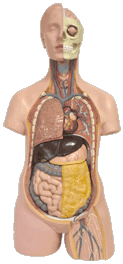At WiseGEEK, we're committed to delivering accurate, trustworthy information. Our expert-authored content is rigorously fact-checked and sourced from credible authorities. Discover how we uphold the highest standards in providing you with reliable knowledge.
What Are Hand-Arm Vibrations?
Laborers who use vibrating tools are at risk for developing a condition known as vibration syndrome or hand-arm vibration syndrome. The condition is caused by the vibrations that make their way through a worker’s hands and arms as a result of using certain handheld tools. At worst, hand-arm vibrations can become disabling as a result of nerve damage and pain; at best, there is a loss of sensitivity or feeling as well as other symptoms. When this occupational hazard was first identified during the 1980s, the medical community also referred to the condition as “vibration white finger.”
Hand-arm vibration syndrome is one of the most common problems among laborers who use vibrating tools. These tools include impact wrenches, pneumatic drills, grinders and chain saws. Hand-arm vibration syndrome can also result when a worker, over a prolonged period, holds material that is being vibrated by a machine.

Typically, the symptoms worsen when a person is exposed to cold weather, and a finger turns pale, and this also may affect more than one digit. White fingers are the result of a decreased blood supply, and when this condition improves with warmer conditions, the fingers will turn red. Smokers, whose circulation may be more compromised, are more at risk from hand-arm vibrations.
Hand-arm vibrations also can cause a person to lose feeling in the fingers as well as some of the sense of touch. A person’s grip may become weaker, and it is also possible that he or she may develop cysts. All of these symptoms do not manifest immediately after exposure to hand-arm vibrations, but instead take time — anywhere from months to years — to fully develop.
Physicians and healthcare professionals may not always spot the condition in an affected patient because there is no definitive test for hand-arm vibration syndrome, also known as HAV or HAVS. Training or education in how to spot the condition is not always given to doctors, and sometimes the cause of the syndrome is not readily apparent. Some safety and health experts recommend limiting the amount of time a laborer is exposed to prolonged or repeated vibrations.
AS FEATURED ON:
AS FEATURED ON:










Discuss this Article
Post your comments